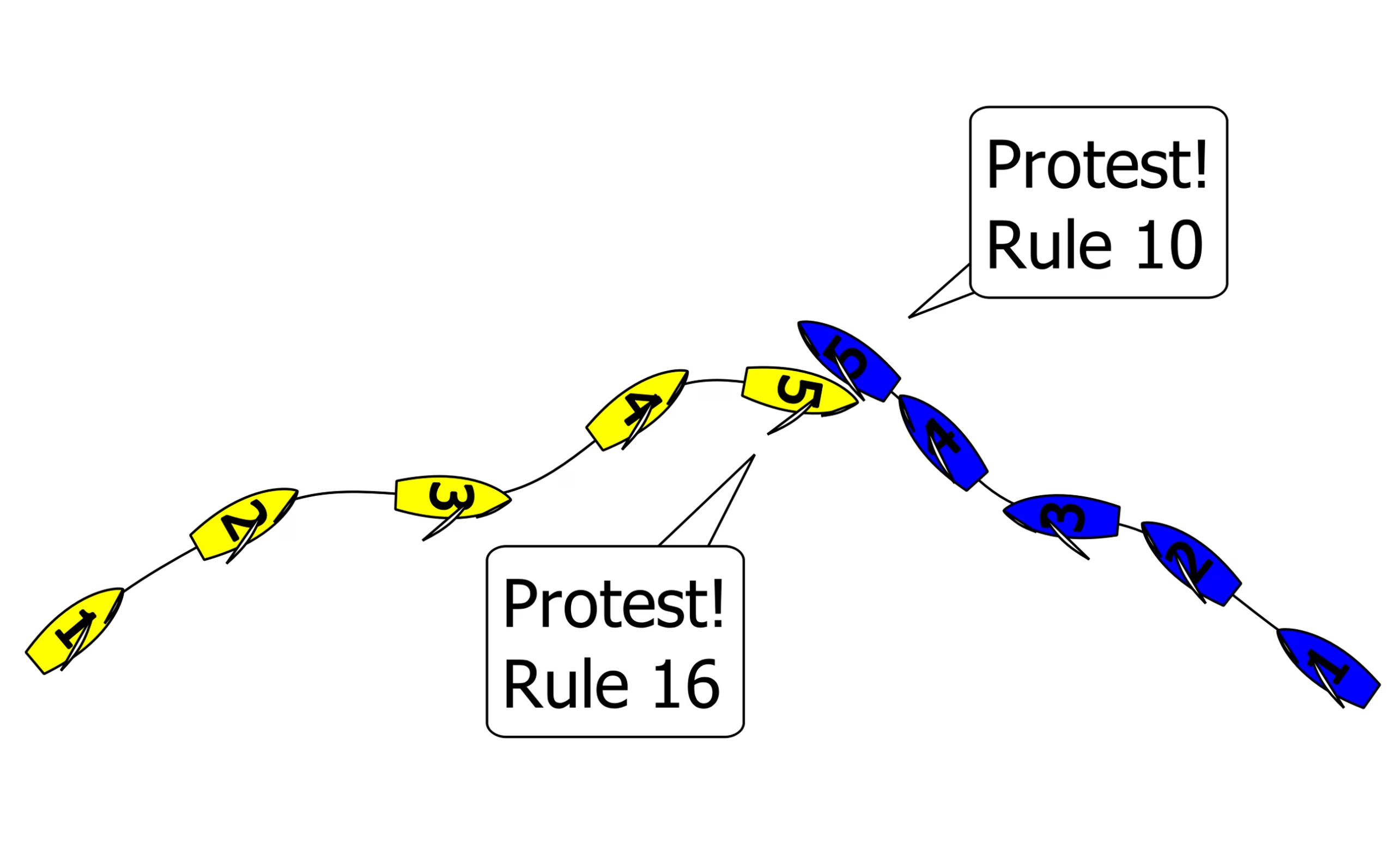Let’s look at what Rule 16 says:
CHANGING COURSE
16.1 When a right-of-way boat changes course, she shall give the other boat room to keep clear.
16.2 In addition, on a beat to windward when a port-tack boat is keeping clear by sailing to pass to leeward of a starboard-tack boat, the starboard-tack boat shall not bear away if as a result the port-tack boat must change course immediately to continue keeping clear.
The purpose of Rule 16 is to ensure fairness and safety when a right-of-way boat alters course. Without this rule, a right-of-way boat could suddenly change direction, cause an unavoidable collision, or force another boat into an impossible situation.
In example 1, at point 1, we see a potential collision course between Blue (on a starboard tack) and Yellow (on a port tack). Under Rule 10, Yellow is required to keep clear of Blue. At position 2, Yellow gybes and is now overlapped with Blue and the windward boat. Yellow now needs to keep clear of Blue under Rule 11.
At position 3, Blue changes course sharply, and there is a small collision without damage or injury. After both boats change course to avoid further contact, Blue immediately protests Yellow for breaking Rule 11. Yellow promptly protests Blue under Rule 16, claiming that Blue’s change of course was too quick for her to respond.
Green may be exonerated under Rule 43.


In example 2, we can see the second part of Rule 16 in action (Rule 16.2).
Yellow and Blue are on a collision course, which both boats notice at position 1. Because Blue is on a starboard tack and Yellow is on a port tack, Yellow needs to keep clear of Blue according to Rule 10.
At position 2, Yellow realises that she needs to take action, which she does at position 3. She bears off to keep clear.
Blue knowing that she is the ROW boat, also bears off in a tactical endeavour to gain more advantage. Yellow instantly heads up, again to avoid Blue. However, Blue does the same and at position 5 there is contact without damage or injury.
Blue protests being the starboard tack boat counting on Rule 10. Yellow also protested but under Rule 16.2.
Blue will be penalised for breaking Rule 16 and Yellow may be exonerated under Rule 43.1.
Rule 16 key points:
- This rule limits the ability of a right-of-way boat to change course to “hunt” another boat. I.e., don’t hinder a boat which is trying to keep clear…
- Prevents unfair maneuvers by the right-of-way boat.
- Ensures the keep-clear boat has a reasonable chance to avoid contact.
- Applies to most course changes except when a boat is tacking (covered by Rule 13).
- Helps maintain fair and safe competition on the racecourse.
Author
-

Rene is a keelboat instructor and sailing coach in the Mandurah area WA. He is also the author of several books about sailing including "The Book of Maritime Idioms" and "Renaming your boat".
View all posts


